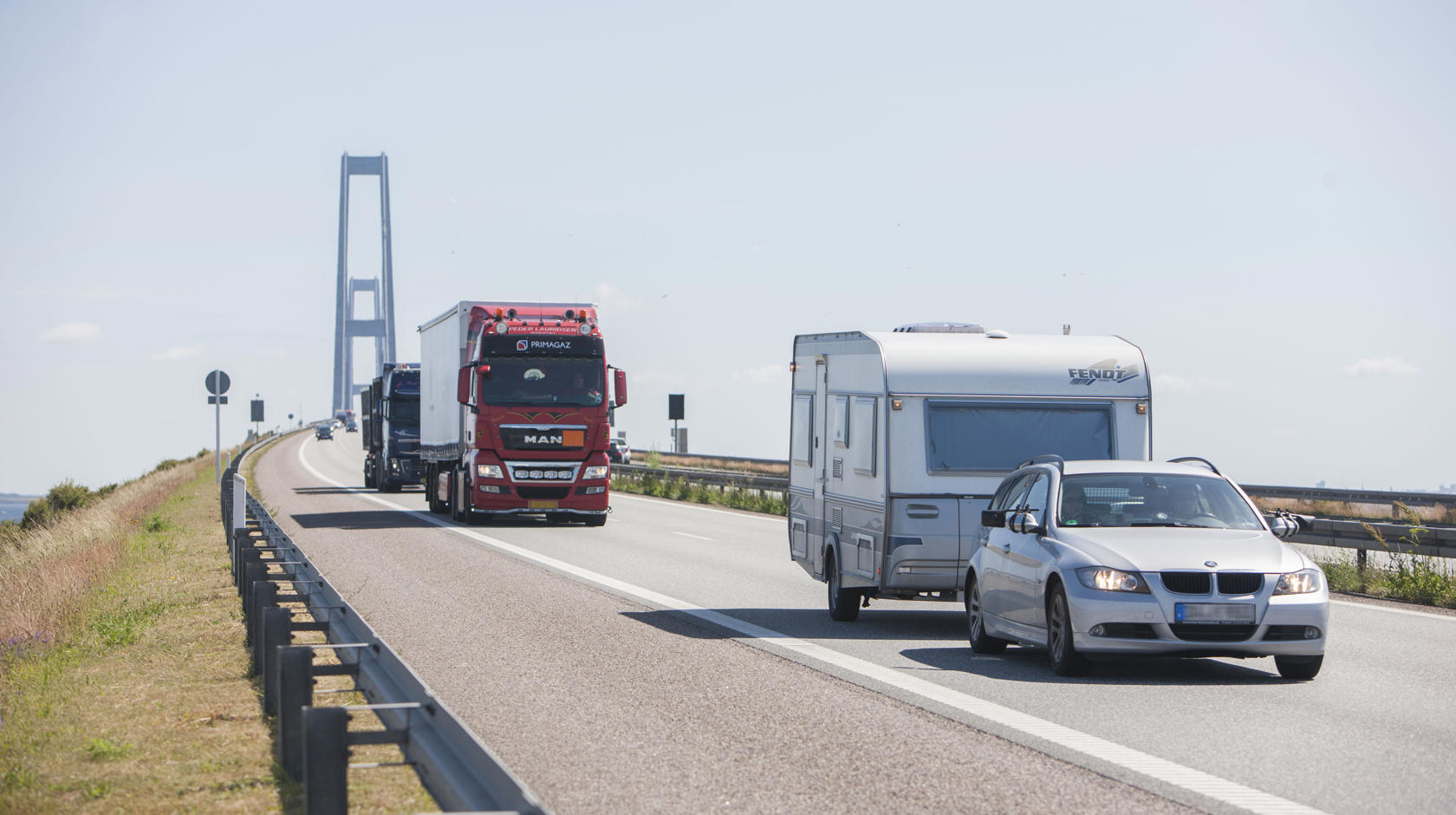
Economic importance of the links
Fixed links create new opportunities for growth
Large fixed links create new opportunities, also for business and citizens at local and regional level.
Storebælt - a traffic success
Traffic success on the Storebælt link has been a fact for a long time. Now, we also know that the link has been a socio-economic success. The total, direct benefit to Danish society is valued at DKK 379 billion over 50 years – corresponding to DKK 9 billion per year – and, in addition, there are the wider economic gains. This is shown in an analysis published by Denmark’s Ministry of Transport and Sund & Bælt (September 2014).
Explosive growth in traffic
The analysis shows that traffic across the Storebælt Bridge has exploded since the opening. Before the bridge opened, it was estimated that around 20,000 vehicles would cross the bridge in 2013. Today, we know that the number was around 30,000. Between the opening in 1997 and 2013, lorry traffic increased by 171 per cent.
Train passengers have been big users of the tunnel and the bridge, which have replaced the previous slow shunting of the train on and off the ferries. During the time of the ferries, some 12,300 passengers crossed Storebælt daily. The figure is about twice that today.
Freight traffic has tripled since the opening – not least because the opening of the Øresund link made it possible to drive non-stop between Scandinavia and central Europe.
The link has thus not only made it easier to travel in Denmark, it has also been a good investment for society and is undoubtedly the best Danish transport investment ever.
Øresund Bridge - socio-economic benefits
In connection with the Øresund Bridge's 10th anniversary, a socio-economic ex-post analysis or “before after” analysis of the Øresund Bridge wasmade. The before-situation refers to a “hypothetical” situation without the fixed link, while the after-situation is inclusive of the Øresund Bridge as we know it.
The analysis is limited to looking at the consumer surplus for passengers and is exclusive of freight as well as buses.
The analysis indicates that motorists are the ones who win the most on the bridge. Thus, approx. 69% is attributed to motorists in 2005. The “motorist part” will fall to 68% in 2010 and 62% in 2020. However, there is some uncertainty associated with this distribution. The reason why train passengers and landing passengers do not get the big wins is that the "before-bridge" alternatives (the flying boats) were relatively affordable, relatively fast and transported people from center to center. In addition, the train system today is organised in such a way that after crossing the bridge, in many cases you are forced to change means of transport or train on your further journey.
Indirect effects on the labor market such as reduced wage pressure, better productivity, and better recruitment opportunities are not included in the analysis. These effects can be of a significant magnitude corresponding to 30-80% of the direct effects. It is immediately to be expected that the Danish side will win relatively more in relation to the effects of the socio-economic 2nd order. It is primarily Copenhagen that has experienced an increase in activity in the labor market.
Femern
The Fehmarnbelt link will be the largest traffic infrastructure investment in Danish history. A new analysis report points to six conclusions in connection with the construction
- Labour demand is expected to be greatest in 2024-2027
- There will be a particular demand for experienced non-skilled drivers, blacksmiths, electricians and engineers
- It is a local, regional and national effort to secure Danish labour to the Fehmarnbelt link
- Important with a focus on both the ordinary building and construction labor market and on the Fehmarnbelt
- There is a highly topical need to increase access to vocational education
- Labour market monitoring and training preparedness must be maintained
Hinterland facilities for the Fehmarnbelt link
The Fehmarnbelt link is socio-economically profitable. At the same time, it is financed by the Danish and foreign users and by subsidies from the EU. It does not only cover the tunnel itself. If the new Storstrømsbro, which is financed by state funds, is disregarded, then the majority of the upgrade of the railway from Ringsted to the Fehmarnbelt is primarily financed by the future users of the Fehmarnbelt link and by the EU. The local and regional users of the railway will thus have a significantly better connection, financed by the overall Fehmarnbelt project.
Of the overall winnings are:
- Significantly lower travel time
- Better conditions for commuters
- Higher house prices
- Easier access to jobs
- Increased settlement
- Better conditions for companies
- Easier access to education